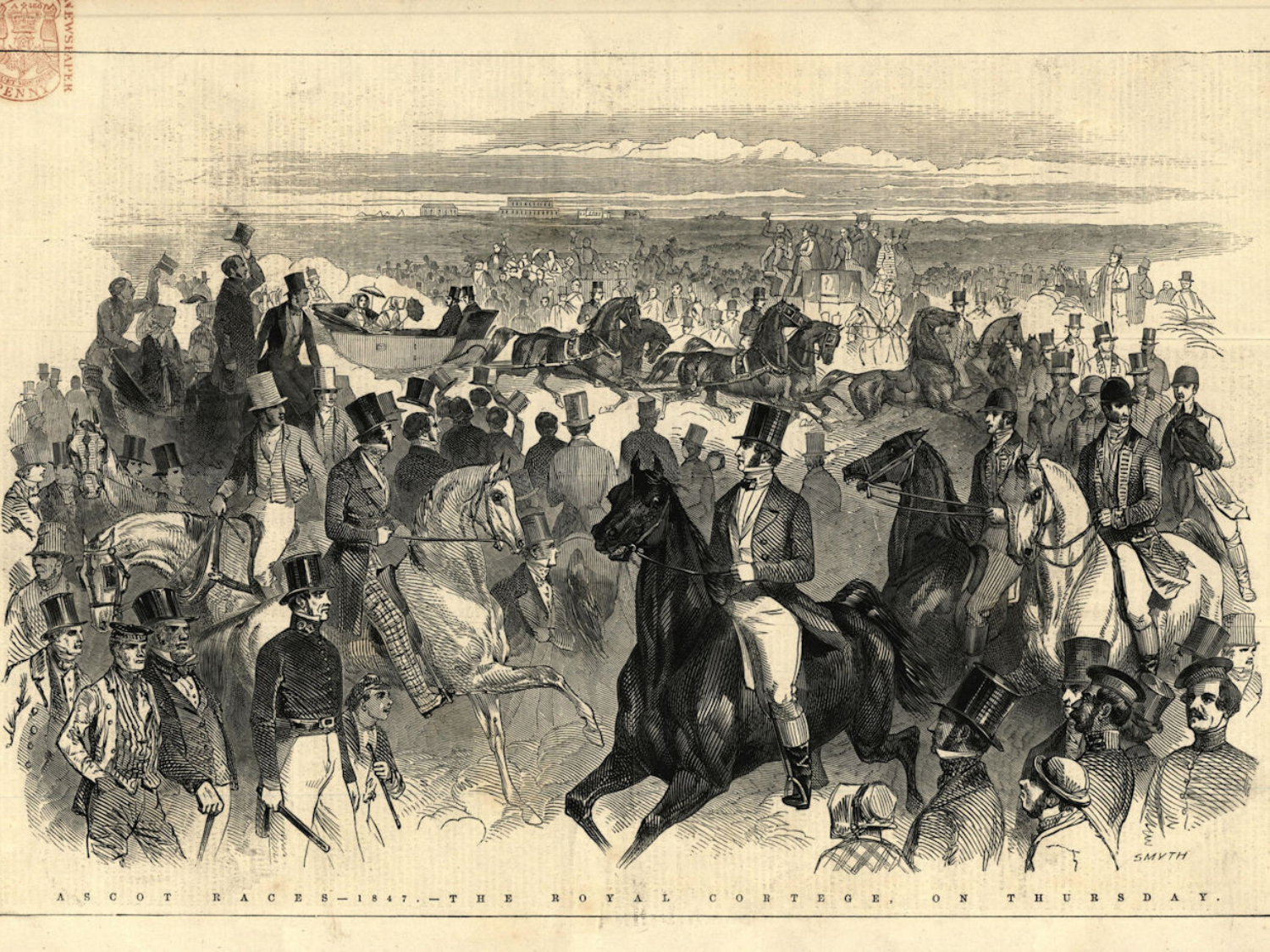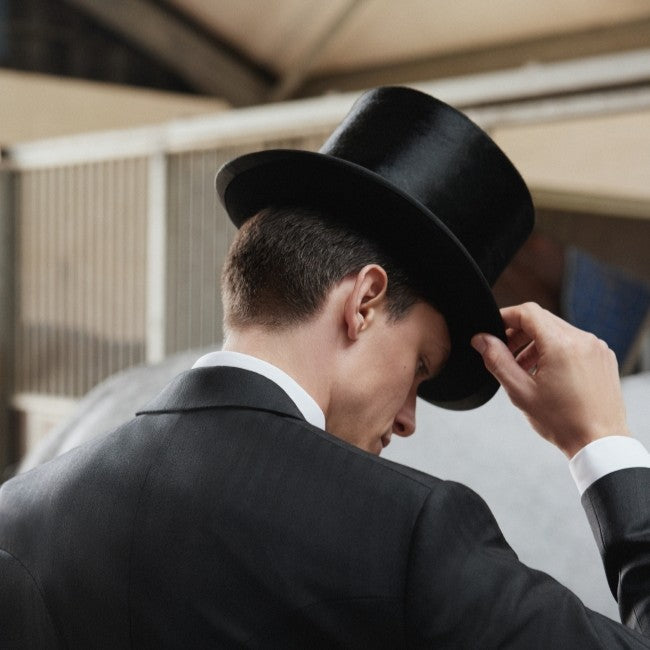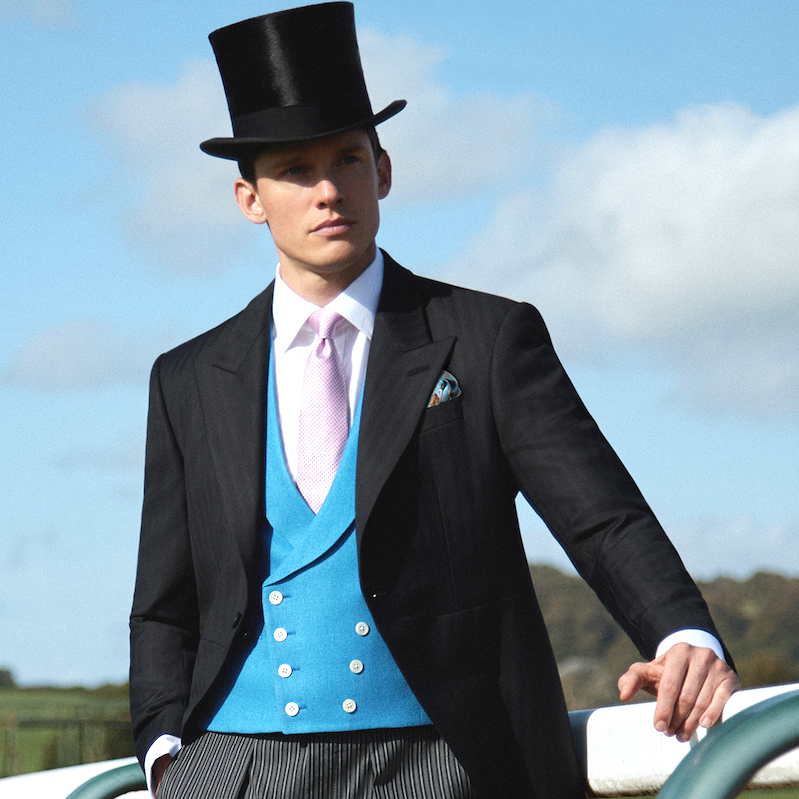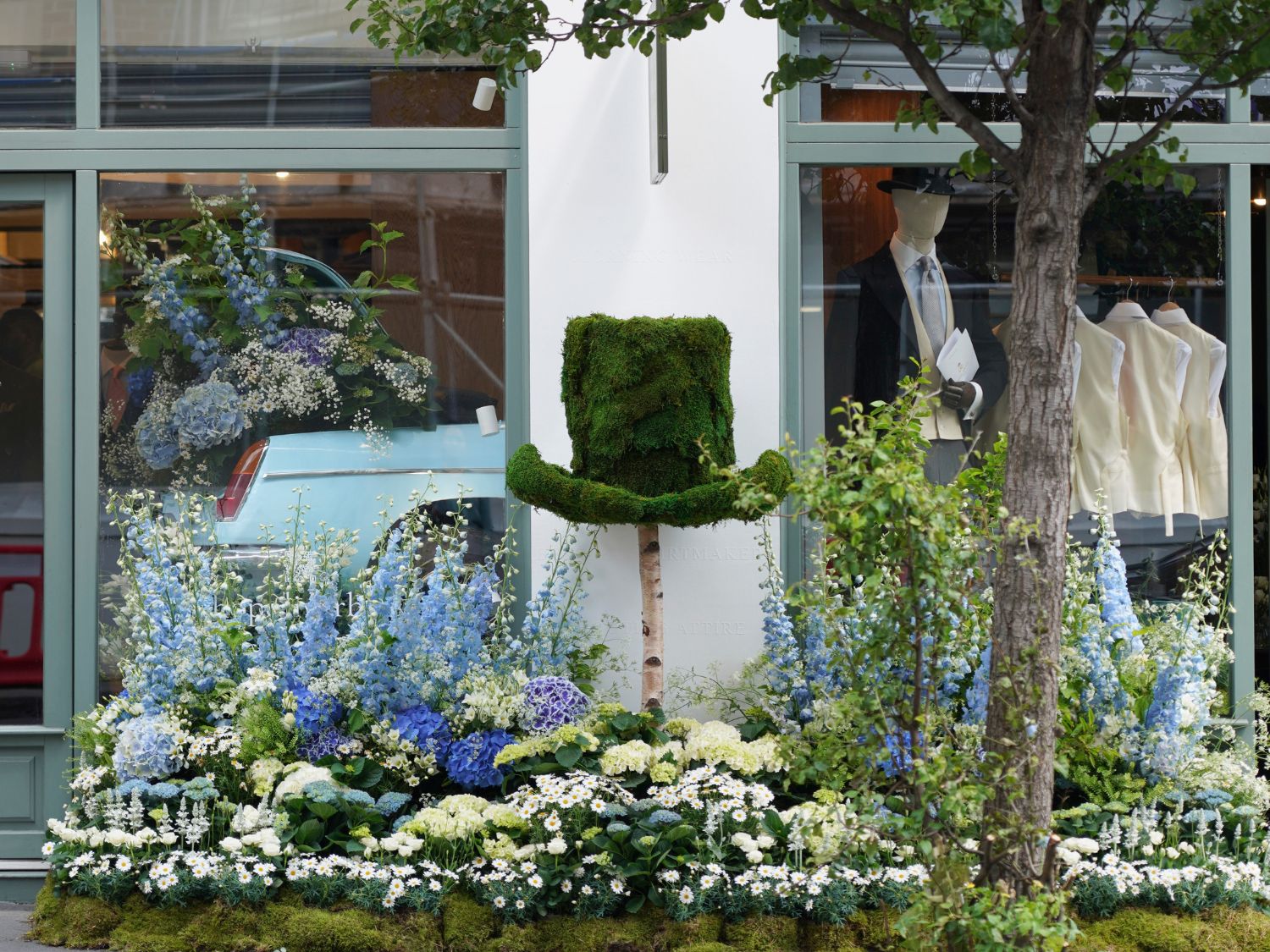
The Silk Top Hat at Royal Ascot: A Crown Jewel of British Tradition
At Oliver Brown, we believe a top hat is more than an accessory - it is a piece of British cultural history, a relic of elegance preserved and passed down through generations. With what is widely regarded as the largest collection of top hats in the world, ranging from rare 19th-century silk plush examples to contemporary models, we are proud to continue a legacy of craftsmanship and refinement. Nowhere is the symbolism of the top hat more enduring than at Royal Ascot, where it has been worn as part of formal morning dress for over two centuries.
Image from antique maps and prints
The association between Ascot and the top hat dates back to the early 1800s, during the reign of George III and the Regency of his son, the Prince Regent (later George IV). Though there was no formal royal edict, it was Beau Brummell, the arbiter of Regency style and a close confidant of the Prince, who set the tone for gentlemanly dress at the races. Brummell famously insisted that men attending Ascot present themselves in immaculate morning dress -a tailored coat, waistcoat, cravat, and the crowning touch: a black silk top hat. It’s even rumoured that he polished his boots in champagne.
Image from Wikipedia
By the mid-19th century, the top hat had become a fixture of British formalwear, and Ascot, particularly within the Royal Enclosure, became the stage on which it shone brightest. Crafted from lustrous silk plush - a fabric no longer produced today - the top hat was both a sartorial and social signifier. To wear one was not just to follow a dress code, but to step into a tradition of aristocratic elegance.
Image from Hello Magazine
While the black silk top hat remains the gold standard at Royal Ascot, the style has evolved. By the late 1800s, grey felt and fur-felt top hats began to appear, offering a subtler alternative, especially suitable for summer wear. These hats, though less formal than their black silk counterparts, came to be appreciated for their understated charm and lighter tone. Regardless of colour, the top hat must be worn correctly (see our do’s and don’ts of top hat video for guidance). In 1949 The Duke of Edinburgh once attended Ascot wearing his grey topper tilted forwarded on his head much to the dismay of other attendees.
Lewis C. Juchaw, editor of the ”Hatters’ Gazette,” was a bit shaken, too.
“I earnestly hope that this doesn’t indicate a new hat fashion,” he told me.” It looks as though the Duke, instead of pushing his hat back off his brow as most men do, pushed it down from the back...no man could wear a hat like that comfortably. The recognised way to wear a grey topper is slightly off the face..." - Quoted from The Field, 2017.
Today, while black remains most favoured within the Royal Enclosure, grey hats are equally often seen around Ascot.
At Oliver Brown, our collection reflects this rich and varied heritage. Alongside original Victorian black silk toppers - each painstakingly restored by skilled hands - we offer grey felt and fur-felt models, as well as rare collapsible opera hats (or gibus hats), a 19th-century innovation prized for its practicality and flair.
Image from The National Archives
What unites each hat in our collection, whether antique or modern, is a devotion to craftsmanship. A top hat is shaped through generations, steamed, brushed, and finished by hand, using time-honoured techniques. We are proud to work alongside one of the world’s few remaining top hat restoration specialists, offering clients expert refurbishment to preserve these remarkable pieces.
For those preparing to attend Royal Ascot, selecting the right top hat is a personal journey - whether one chooses the enduring formality of black silk or the soft, refined appeal of grey felt. At Oliver Brown, our team is here to assist every step of the way from any of our stores.
We invite you to visit us in-store and find the top hat that will not only complete your ensemble - but honour one of Britain’s most distinguished traditions.
“A gentleman’s hat is his crown.” - Oliver Brown.













